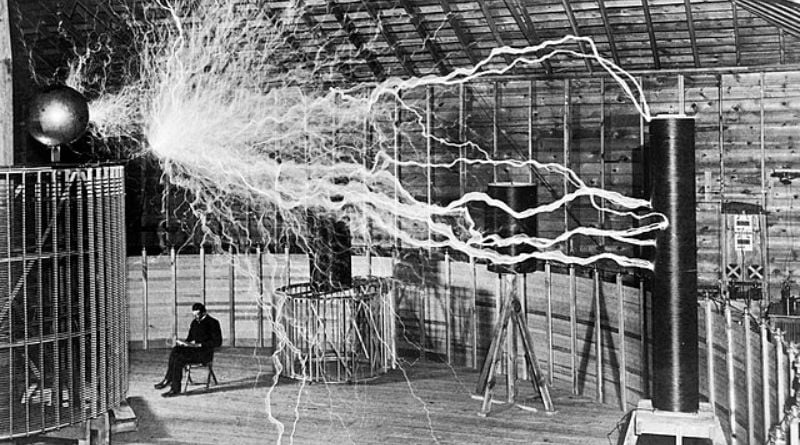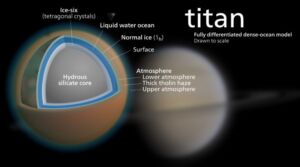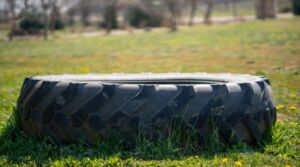
Imagine a machine that shoots bolts of electricity, creating a miniature lightning storm. That’s the mesmerizing power of the Tesla coil, an invention that continues to spark curiosity and experimentation over a century after its creation. Developed by the visionary inventor Nikola Tesla, the Tesla coil is a testament to human ingenuity and its potential to manipulate the very forces of nature.
In this deep dive, we’ll unravel the mysteries of the Tesla coil, exploring its history, scientific principles, and captivating applications. Buckle up, science enthusiasts and tech aficionados, because we’re about to embark on a thrilling ride through the world of high-voltage electricity!
A Spark of Genius: The Birth of the Tesla Coil
Born in the 19th century, a period of immense scientific progress, Nikola Tesla was a man brimming with revolutionary ideas. Unlike his contemporaries who focused on direct current (DC) electricity, Tesla championed the potential of alternating current (AC). He envisioned a world powered by efficient, long-distance transmission of AC electricity, a vision that continues to shape our modern electrical grids.
During his tireless experimentation, Tesla stumbled upon a groundbreaking invention in 1891: the Tesla coil. This resonant transformer circuit aimed to achieve two key goals:
Generate high voltage: The Tesla coil takes a relatively low voltage input and transforms it into an incredibly high voltage output, often exceeding one million volts.
Wireless power transmission: Tesla envisioned a future where electricity could be transmitted wirelessly, eliminating the need for cumbersome power lines.
While the dream of wireless power transmission on a large scale remains elusive, the Tesla coil stands as a testament to Tesla’s brilliance and his relentless pursuit of innovation.
Demystifying the Magic: How Does a Tesla Coil Work?
The captivating lightning bolts produced by a Tesla coil might seem like magic, but the device operates on well-defined scientific principles. Let’s delve into the core components and understand the fascinating dance of electricity within a Tesla coil:
Primary Coil: This coil, typically made of thick copper wire with a few turns, receives the initial AC current from a power source.
Capacitor: This component acts as a temporary storage unit for electrical energy. It charges and discharges rapidly, playing a crucial role in amplifying the voltage.
Spark Gap: This air gap between two electrodes disrupts the smooth flow of current, forcing it to oscillate rapidly within the circuit. The distance between the spark gap electrodes determines the frequency of these oscillations.
Secondary Coil: This coil, significantly taller and thinner than the primary coil, has many more turns of wire. The high-frequency, high-voltage current from the primary coil is transferred to the secondary coil through a phenomenon called electromagnetic induction. Due to the vast difference in the number of turns between the coils, the voltage in the secondary coil gets further amplified, reaching those impressive million-volt levels.
Topload: This terminal at the top of the secondary coil helps concentrate the electric field and control the direction of the discharged current, creating the signature lightning bolts.
When the power is switched on, a captivating sequence of events unfolds:
- The AC current energizes the primary coil.
- The current charges the capacitor.
- Once charged, the capacitor discharges through the spark gap, creating a spark and disrupting the current flow.
- This sudden disruption creates a high-frequency oscillating current in the primary coil.
- Through electromagnetic induction, this oscillating current is transferred to the secondary coil, where the voltage is further amplified.
- The high voltage at the topload ionizes the surrounding air, creating a conductive path for the current to discharge in the form of impressive sparks or streamers.
The interplay between these components creates a fascinating resonance effect, where the frequency of the oscillating current in the circuit aligns with the natural resonant frequency of the secondary coil. This resonance further amplifies the voltage, leading to the generation of those awe-inspiring electrical discharges.
Beyond the Spectacle: Applications of the Tesla Coil
While the visual spectacle of a Tesla coil in action is undeniable, its applications extend far beyond entertainment. Here are some fascinating ways Tesla coils are used today:
Education and Science Shows
Tesla coils are a staple in science museums and educational demonstrations, sparking curiosity and igniting a passion for science and electricity in young minds.
Wireless Charging
While large-scale wireless power transmission remains a challenge, Tesla coil principles are being explored for short-range wireless charging applications. Imagine charging your phone without the need for pesky cables!
Medical Equipment
High-frequency currents generated by Tesla coils can be used in certain medical treatments, such as stimulating muscle growth or blood vessel repair.
Entertainment Industry
The dramatic visual effects produced by Tesla coils have found a place in movies, concerts, and theatrical productions, adding a touch of electrifying excitement.
Leak Detection
Smaller, handheld Tesla coil variants, also known as Oudin coils, are used in various industries to detect leaks in high-vacuum systems. The high-frequency current can penetrate through certain materials, and the presence of a leak disrupts the electrical field, allowing for pinpointing the leak’s location.
Plasma Research
Tesla coils can generate plasma, a state of matter where atoms are stripped of some electrons, creating a sea of charged particles. This plasma can be used in various scientific research applications, such as studying material properties or developing advanced propulsion systems.
It’s important to remember that Tesla coils are powerful devices that should be handled with caution. The high voltages they produce can cause serious injury or even death if not used responsibly. However, in the hands of skilled professionals and responsible hobbyists, the Tesla coil continues to be a valuable tool for education, scientific exploration, and even a touch of electrifying entertainment.
Building Your Own Tesla Coil: A Journey for the Curious
The allure of creating your own miniature lightning storm is undeniable. For the adventurous and technically inclined, building a Tesla coil can be a rewarding project that combines scientific knowledge with hands-on experience. However, it’s crucial to approach this endeavor with a healthy dose of respect for the power involved.
Here are some essential points to consider before embarking on your Tesla coil building journey:
Safety First
Safety should be your top priority. Make sure you understand the risks associated with high voltages and take all necessary precautions to avoid electrical shock. Research proper safety protocols and wear appropriate protective gear while working with the device.
Start Small
Begin with a low-power Tesla coil kit to gain experience before attempting more complex builds. There are numerous beginner-friendly kits available online that offer clear instructions and safety features.
Research and Learn
Building a Tesla coil requires a good understanding of electrical principles and circuit design. There are a wealth of online resources, books, and forums dedicated to Tesla coils, providing valuable guidance and troubleshooting tips.
Seek Guidance
Don’t be afraid to seek help from experienced Tesla coil builders or electronics hobbyists. Online communities and forums can be a valuable source of knowledge and support throughout your project.
Building a Tesla coil can be an enriching and educational experience. Remember, the key is to prioritize safety, start small, and leverage the vast amount of resources available to guide you on your electrifying journey.
The Enduring Legacy of Nikola Tesla: A Vision for the Future
The Tesla coil stands as a powerful symbol of Nikola Tesla’s visionary genius. His relentless pursuit of innovation and his belief in the potential of AC electricity continue to shape our technological landscape.
While the dream of wireless power transmission on a global scale hasn’t yet been fully realized, advancements in areas like resonant inductive coupling and magnetic resonance technology show promise for the future. Perhaps one day, Tesla’s vision of a world powered by wireless electricity will become a reality.
The Tesla coil’s legacy extends beyond its practical applications. It serves as a constant reminder to embrace curiosity, challenge the status quo, and push the boundaries of scientific exploration. As we continue to delve deeper into the world of electricity and explore new frontiers in energy transmission, the spirit of Nikola Tesla and his electrifying invention will undoubtedly continue to inspire future generations.
Here are the credible sources referenced to craft this comprehensive piece on the Tesla Coil:
Tesla Coil – Wikipedia: https://en.wikipedia.org/wiki/Tesla_coil This in-depth Wikipedia entry provided a solid foundation for understanding the Tesla coil’s history, core components, and operational principles.
History of the Tesla Coil – Wikipedia: https://simple.wikipedia.org/wiki/Tesla_coil This section within the Wikipedia article offered valuable insights into Nikola Tesla’s motivations for inventing the Tesla coil and its historical context within the development of AC electricity.
Tesla coil | Definition, History, & Facts – Britannica: https://www.britannica.com/summary/Nikola-Tesla The Britannica entry on the Tesla coil served as a helpful resource for explaining the device’s function as a resonant transformer circuit and its ability to generate high-voltage, low-current electricity.
Tesla coil – Oxford Reference: https://www.oxfordreference.com/display/10.1093/oi/authority.20110803103236792 This concise reference from Oxford Reference provided a clear definition of the Tesla coil and its role in producing high-frequency, high-voltage currents.
Building Your Own Tesla Coil: https://www.youtube.com/watch?v=QsFExkzqf5w This website, maintained by Tesla coil enthusiast Bill Hammack, proved to be a goldmine of information for the “Building Your Own Tesla Coil” section. It offers valuable safety precautions, project ideas for various skill levels, and a supportive online community forum.



